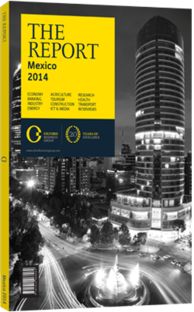Bemused: The highlights of Mexico City’s vast array of museums
Even by megacity standards, Mexico City has a wealth of museums. From classical painting to dolls and toys, the capital’s more than 200 offerings house a richness and a variety found in few places in the world. Some of the most well-known museums cover art, anthropology, history and technology.
They sometimes come with extras. More than 50 of the city’s museums host events on the last Wednesday of each month from 7.00pm to 10.00pm with special offerings such as plays, book presentations, exhibition openings and lectures. Details are published in advance on the city’s culture website. They can also be cheap: most state-run museums have a set fee of MXN57 ($4.42) or less, and all are free on Sundays.
POPULAR PICKS: Some deal with the country’s early history. The National Museum of Anthropology, sporting an iconic fountain in the central patio, tells the story of the country from its first inhabitants, and hosts a large collection of artefacts from pre-Hispanic cultures such as the Mayas and Aztecs. The Templo Mayor, an archaeological site and museum in the heart of the city, also emphasises the period before Spanish colonisation and Western influence.
Others centre on the arts. The Bellas Artes Palace, built in a mixed style of art nouveau and art deco, and with an exterior of Carrara marble, hosts a variety of Mexican muralist operas from artists such as Rivera, Orozco and Siqueiros. Besides being a theatre, the palace has two museums: the National Museum of Architecture and the Museum of the Bellas Artes Palace. Next door, the National Museum of Art covers Mexican art from the mid-16th to the mid-20th century.
For those looking for something more recent, the Tamayo Contemporary Art Museum hosts a large number of modern art exhibits year-round. It is named after Rufino Tamayo, among Mexico’s best-known artists and famous antagonist of the muralist movement. Yet not much of Tamayo’s work is shown there; to admire his unique mixography technique, one may cross the street to Chapultepec and the Museum of Modern Art.
The National History Museum, also in Chapultepec and better known as Chapultepec Castle, was the home of Mexican emperor Maximilian I, of the Hasburg royal family, in the late 1860s. After that it became a military academy, then the presidential residence, until at last it was turned into a museum in 1939. Today the castle’s exhibition is a passage through Mexican history. It is also known for its views of Reforma Avenue and the upscale Polanco district.
Further south, in the once-suburban towns of San Angel and Coyoacan, two museums stand out. The Studio-House of Diego Rivera and Frida Kahlo was once home to the renowned artist couple. There one will find a diverse array of Rivera’s work, unique architecture and access to the couple’s erstwhile living quarters. One drawback is that very little of Frida’s work is shown. To admire her operas, and for a glimpse into her life, one may visit the Frida Kahlo Museum, also known as La Casa Azul. Here will be found a number of Frida’s paintings from different stages of her life, shown in the same house where the artist was born, raised and passed away.
HIDDEN GEMS: Farther from the beaten path are others worth visiting. For lovers of contemporary art, there is a museum at the National Autonomous University of Mexico. Here, a vast array of activities and events are hosted in a venue well worth visiting just for its architecture and location. Another museum to visit, both for its collection and the beauty of its gardens, is the National Watercolour Museum. Located in the Coyoacan neighborhood, it is the first museum dedicated specifically to this technique. Its permanent exhibit is a historical journey through the use of watercolour in Mexico.
Most diverse of all is the Dolores Olmedo Museum, in the Xochimilco neighborhood, which holds the collections of its namesake, a businesswoman and art patron. More than 150 works by Diego Rivera and Frida Kahlo, whom she knew well, are exhibited there, as well as pre-colonial pieces. The site is also known for its animal inhabitants, mainly peacocks and xoloitzcuintles, a rare and hairless pre-Hispanic breed of dog.
You have reached the limit of premium articles you can view for free.
Choose from the options below to purchase print or digital editions of our Reports. You can also purchase a website subscription giving you unlimited access to all of our Reports online for 12 months.
If you have already purchased this Report or have a website subscription, please login to continue.

